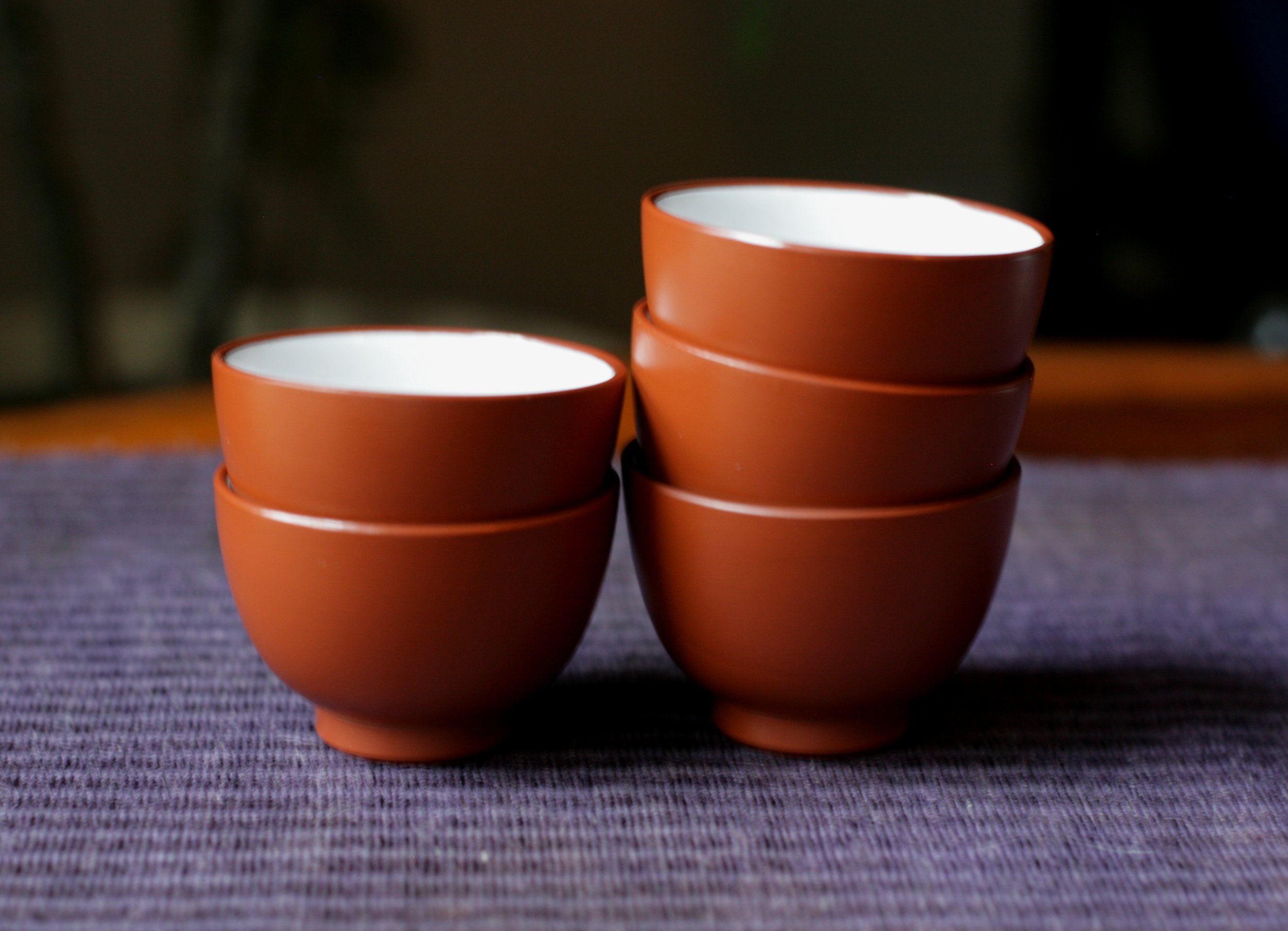 Image 1 of 9
Image 1 of 9

 Image 2 of 9
Image 2 of 9

 Image 3 of 9
Image 3 of 9

 Image 4 of 9
Image 4 of 9

 Image 5 of 9
Image 5 of 9

 Image 6 of 9
Image 6 of 9

 Image 7 of 9
Image 7 of 9

 Image 8 of 9
Image 8 of 9

 Image 9 of 9
Image 9 of 9










Tokoname yaki shudei teacup (76)
Tokoname yaki shudei teacup. 7cm x 5cm. Sold individually.
Tokoname yaki is one of the oldest pottery traditions in Japan, existing since the 8th century AD. Tokoname is one of the six ancient kilns, i.e. Rokkoyo, of Japan, the other sites include Tamba, Seto, Bizen, Shigaraki, and Echizen. Tokoname city is located in Aichi prefecture on the east coast of the large island of Honshu. Tokoname is most famous within the tea community for its production of teapots and the characteristic use of shudei clay, a red clay rich in iron that is sourced around Tokoname.
Stylistic elements of Tokoname yaki:
Yakishime – unglazed stoneware.
Yohen – “kiln change”, a decorative technique using ash glazes to create subtle to dramatic color variations on the vessel body.
Mogake – “seaweed wrapping”, a traditional way of decorating pottery using a seaweed that burns a delicate, aleatoric network of lines on the surface of the vessel during the firing process.
Tobikanna – chittering cut pattern on the vessel body created by using a knife while the vessel spins on the wheel.
Kushime – comb marks on the vessel, presenting as a series of fine lines.
Nerikomi – also known as neriage, a swirling pattern of colors created by kneading different types of clay together before spinning the vessel on the wheel.
Sujihiki – a rustic style that leaves the clay in a freshly-spun-off-the-wheel aesthetic.
Matsugawa – “pine bark”, a surface texture created on the vessel that resembles pine bark.
Tokoname yaki shudei teacup. 7cm x 5cm. Sold individually.
Tokoname yaki is one of the oldest pottery traditions in Japan, existing since the 8th century AD. Tokoname is one of the six ancient kilns, i.e. Rokkoyo, of Japan, the other sites include Tamba, Seto, Bizen, Shigaraki, and Echizen. Tokoname city is located in Aichi prefecture on the east coast of the large island of Honshu. Tokoname is most famous within the tea community for its production of teapots and the characteristic use of shudei clay, a red clay rich in iron that is sourced around Tokoname.
Stylistic elements of Tokoname yaki:
Yakishime – unglazed stoneware.
Yohen – “kiln change”, a decorative technique using ash glazes to create subtle to dramatic color variations on the vessel body.
Mogake – “seaweed wrapping”, a traditional way of decorating pottery using a seaweed that burns a delicate, aleatoric network of lines on the surface of the vessel during the firing process.
Tobikanna – chittering cut pattern on the vessel body created by using a knife while the vessel spins on the wheel.
Kushime – comb marks on the vessel, presenting as a series of fine lines.
Nerikomi – also known as neriage, a swirling pattern of colors created by kneading different types of clay together before spinning the vessel on the wheel.
Sujihiki – a rustic style that leaves the clay in a freshly-spun-off-the-wheel aesthetic.
Matsugawa – “pine bark”, a surface texture created on the vessel that resembles pine bark.